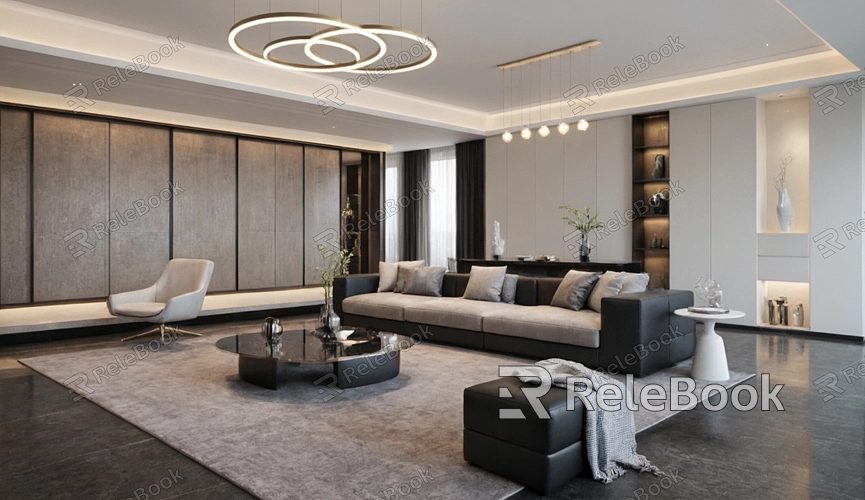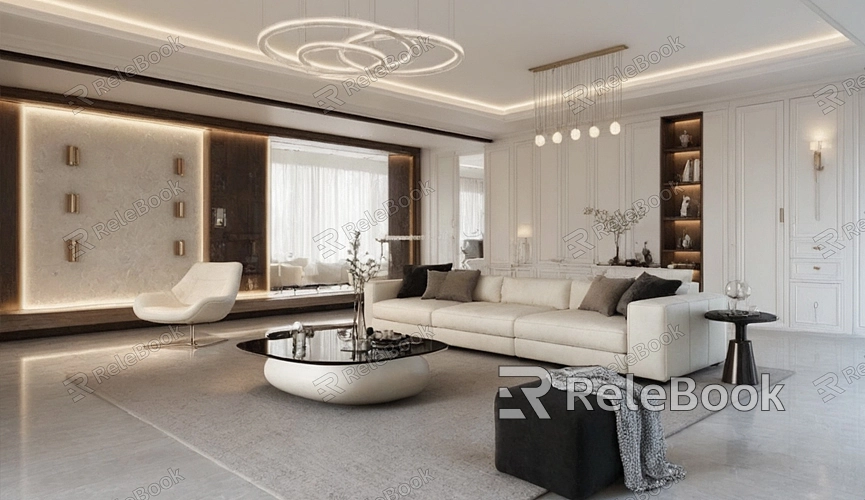How to Make SketchUp Models Look Realistic?
In architectural design, interior decoration, and landscape design, SketchUp is a highly popular 3D modeling tool. Many designers and enthusiasts use it to create various models, but sometimes these models appear less realistic in terms of visual effects. How to make SketchUp models look more realistic has become a topic of interest for many users. This article will explore several techniques to enhance model realism, including the use of materials and lighting effects and the addition of scene details.

Choose the Right Materials
In SketchUp, the choice and application of materials are crucial factors affecting model realism. Suitable materials not only enhance the aesthetics of the model but also improve its authenticity. Here are some methods to enhance material effects:
1. Use High-Quality Textures
High-quality textures are key to achieving realistic effects. Choosing clear, detailed images as textures can present more details on the model's surface. When selecting textures, ensure they match the actual materials of the model; for example, wood should use wood grain textures, and stone should correspond to the appropriate stone texture.
2. Adjust Texture Scale
Sometimes, the scale of the texture may not correspond to the size of the model. By adjusting the texture scale, it can look more natural. Ensure the texture scaling matches the actual size of the model to avoid distortion.
3. Add Subtle Imperfections
Materials in nature are often not flawless. Adding subtle imperfections, such as scratches, stains, or color variations, can make the material appear more realistic. In SketchUp, you can edit textures using software like Photoshop to include these details and then import them back into the model.

Utilize Lighting and Shadow Effects
Lighting and shadow are important factors in enhancing model realism. Proper lighting and shadow settings can significantly enhance visual effects. Here are some suggestions for handling lighting and shadows:
1. Use Natural Light Sources
In SketchUp, you can use natural light sources to simulate realistic lighting effects. Adjust the direction and intensity of sunlight to simulate different lighting conditions throughout the day, allowing the model to showcase different effects under various lighting.
2. Add Shadows
Shadows are essential elements in shaping the perception of three-dimensional space. Properly adding shadows to the model can enhance the object's sense of depth. Adjust the transparency and blur of shadows to make them appear more natural and avoid harsh, unnatural shadows.
3. Incorporate Reflection and Refraction
In certain scenes, adding reflection and refraction effects can enhance the model's realism. For instance, adding reflection effects to water surfaces or glass materials can make them appear more vibrant. In SketchUp, plugins can be used to achieve these effects.
Add Scene Details
Details in the scene often determine the overall atmosphere of the model. By incorporating appropriate details, you can make the model look more lively. Here are some suggestions for adding details:
1. Add Environmental Elements
Incorporating environmental elements such as plants, furniture, or other decorative items around the model can enhance overall realism. Use the built-in library in SketchUp or download suitable 3D models from online resources to enrich the environment.
2. Use Suitable Backgrounds
Choosing appropriate backgrounds can provide better context for the model. You can use photos or custom background images and import them into SketchUp to create a more immersive scene.
3. Refine Model Structure
Ensure every detail of the model is meticulously crafted. Details such as doors and windows or the slope of the roof are crucial for realism. Careful modeling not only enhances visual appeal but also strengthens the overall professionalism of the design.
Use Appropriate Rendering Tools
In SketchUp, rendering plugins are effective tools for improving model realism. Choosing suitable rendering plugins can further enhance image quality. Here are some recommended rendering tools:
1. V-Ray
V-Ray is a powerful rendering plugin that helps users generate high-quality images. With its extensive material library and lighting settings, users can easily create realistic effects.
2. Enscape
Enscape is a real-time rendering tool that quickly generates high-quality renderings. Its intuitive interface allows users to see changes instantly, greatly enhancing workflow efficiency.
3. Lumion
Lumion is another popular rendering software ideal for architects. With rich scene elements and natural lighting effects, Lumion can transform SketchUp models into vibrant scenes.
Optimize Model Layout
The layout of the model also significantly affects realism. A well-organized layout can enhance visual appeal and prevent the model from appearing overcrowded or chaotic. Here are some suggestions for optimizing the layout:
1. Pay Attention to Spatial Proportions
When modeling, consider the spatial proportions between different elements to maintain harmony throughout the model. Oversized furniture or undersized decorative items can negatively affect overall aesthetics.
2. Keep It Simple
Avoid adding excessive unnecessary details to the model during design. Maintaining simplicity helps highlight the main elements, making the overall effect more striking.
3. Consider Viewing Angles
When laying out the model, think about the final rendering angles. Choosing the right perspective can showcase the model at its best and make it more appealing.
Making models in SketchUp look realistic is not an overnight task. By selecting appropriate materials, effectively utilizing lighting and shadow effects, adding scene details, and using suitable rendering tools, designers can significantly enhance the realism of their models. Additionally, optimizing model layouts should not be overlooked. We hope the tips provided in this article help you create visually striking works in SketchUp. Finally, if you want to access more high-quality 3D models and textures, visit the Relebook website to enrich your design library.
FAQ
How can I enhance the realism of my SketchUp models?
You can significantly enhance realism by selecting high-quality materials, setting proper lighting effects, and adding environmental details.
What should I pay attention to when choosing textures?
Choose high-resolution textures that match the model materials and consider their scale on the model's surface to ensure a natural look.
How can I improve lighting to increase model realism?
Utilize natural light settings and appropriate shadow effects to enhance depth and mimic real-world lighting conditions.
What details can make my SketchUp model more realistic?
Adding environmental elements, suitable backgrounds, and subtle imperfections can enhance the liveliness of your model.
What are the benefits of using rendering tools?
Rendering tools can produce high-quality images and employ complex lighting and material settings to present a more realistic and professional visual effect.

